How many times in a day do you call yourself crazy? Or go off on a rant about how so-and-so is totally retarded, or about how you’ve been depressed for days because your job search has not yielded favourable results? We loosely throw around these terms, casually talking about issues which are a crippling reality for millions of people around us. We’re all guilty as charged. But it is extremely pertinent that we rid ourselves of this nonchalance and educate ourselves about the plethora of mental disorders that are almost as common as the flu.
Here are 8 mental illnesses we should learn and spread awareness about, to try and minimize the stigma surrounding mental illness in our country.
1. Depression
When you have depression, it’s more than feeling sad. Depression is marked by a sense of hopelessness and helplessness. While sadness is a fleeting feeling, depression is a deep-rooted illness, which often drives patients to suicide. It is a crippling, oftentimes chronic sense of powerlessness that grips you, irrespective of your circumstance.
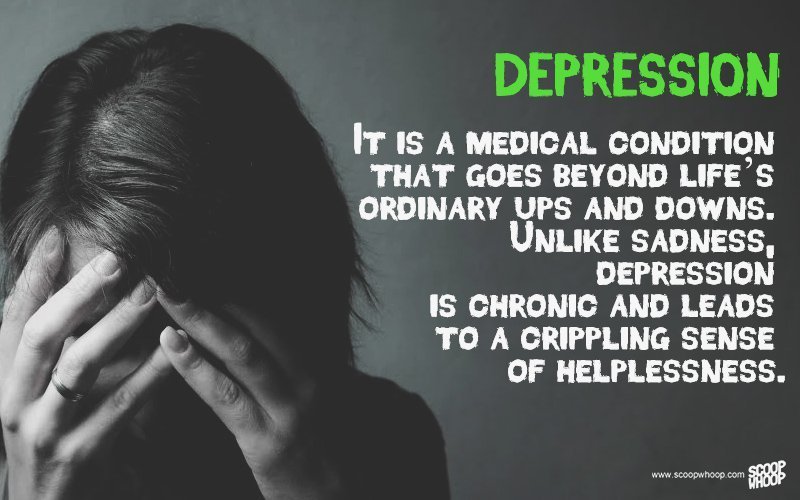
Depression is when a normal, human emotion gets out of control to the point where it is no longer normal. Considering someone with an illness merely to be “sad” is an insult to that person and minimizes an illness that takes thousands of lives every year.
2. Bipolar Disorder
People with bipolar disorder experience unusually intense emotional states that occur in distinct periods called “mood episodes.” Each mood episode represents a drastic change from a person’s usual mood and behaviour . An overly joyful or overexcited state is called a manic episode, and an extremely sad or hopeless state is called a depressive episode. Sometimes, a mood episode includes symptoms of both mania and depression.
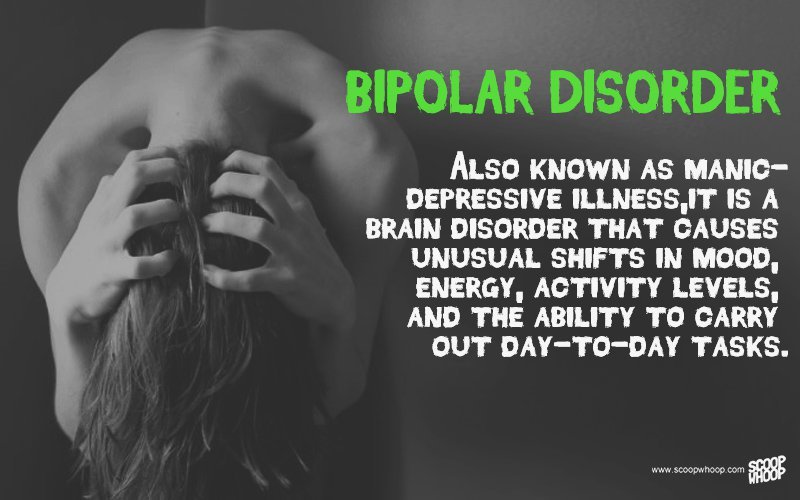
3. Obsessive Compulsive Disorder
Children and adults with obsessive-compulsive disorder (OCD) suffer from unwanted and intrusive thoughts that they can’t seem to get out of their heads (obsessions), often compelling them to repeatedly perform ritualistic behaviours and routines (compulsions) to try and ease their anxiety. Most people who have OCD are aware that their obsessions and compulsions are irrational, yet they feel powerless to stop them.
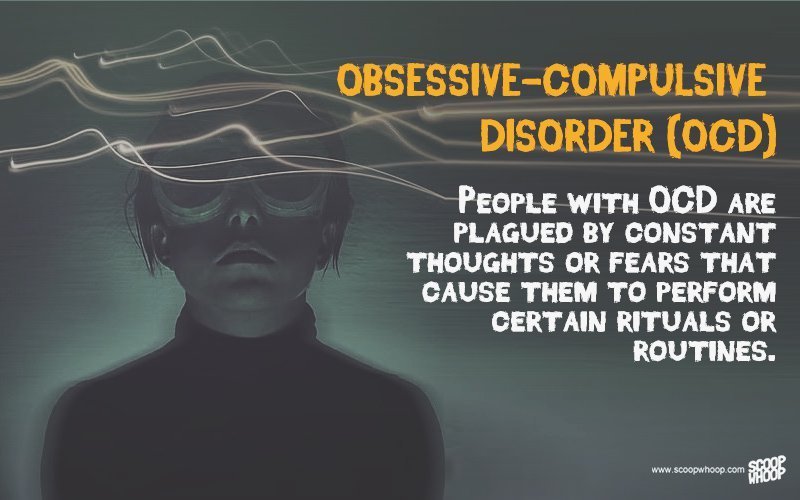
The term OCD is often thrown around to describe someone who is tidy and organized. This trivializes and undermines people that have the disorder, turning something that people are actually suffering from into a fad or an enhanced statement.
4. Schizophrenia
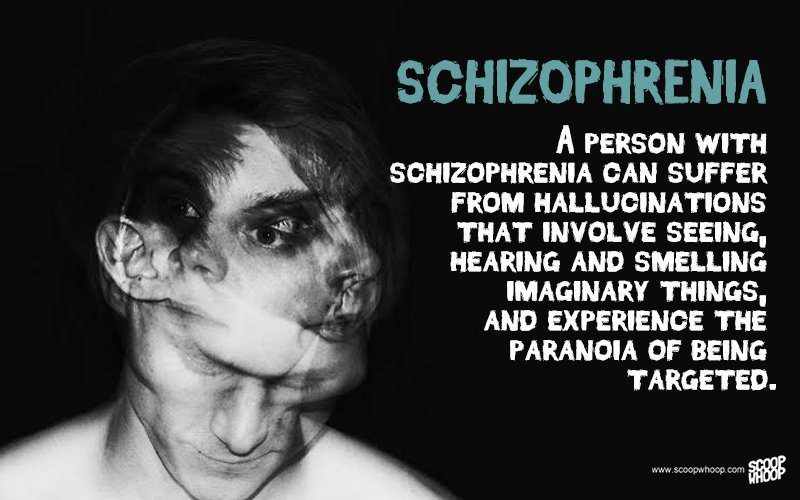
The severity of the symptoms and the long-lasting, chronic pattern of schizophrenia varies with each patient. However, regular prescribed medications and other treatments help reduce and control the distressing symptoms of the illness.
5. Social Anxiety Disorder
Social anxiety disorder is the extreme fear of being scrutinized and judged by others in social or performance situations and can wreak havoc on the lives of those who suffer from it. This disorder is not simply shyness that has been inappropriately medicalized.
While it may vary in degree from time to time, it entails constant and unsubstantiated worry that causes significant distress and interferes with daily life.
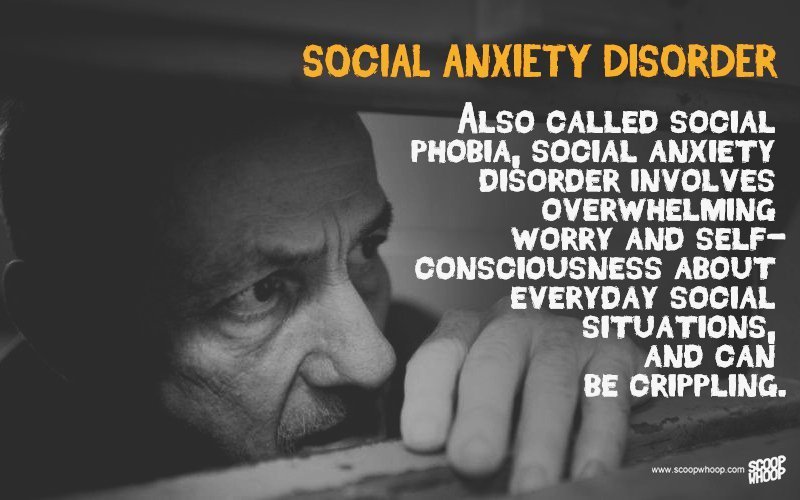
Seemingly out-of-the-blue panic attacks and the preoccupation with the fear of having another one is common amongst people suffering from social anxiety disorder. In many cases, the person plagued by this illness is aware that the fear is unreasonable, yet is unable to overcome it.
6. Attention Deficit Hyperactivity Disorder
Inattention, hyperactivity, and impulsivity are the key behaviours of ADHD. It is normal for all children to be inattentive, hyperactive, or impulsive sometimes, but for children with ADHD, these behaviours are more severe and occur more often. ADHD can occur in people of any intellectual ability, although it is more common in people with learning difficulties. People with ADHD may also have additional problems, such as sleep and anxiety disorders.
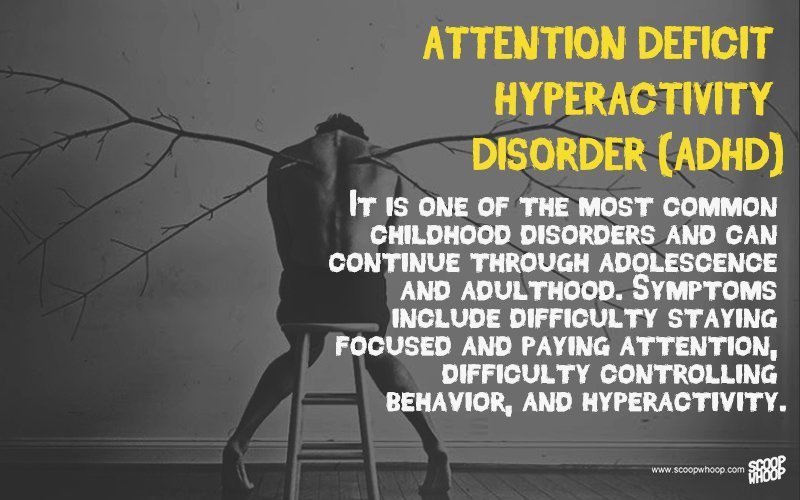
The symptoms of ADHD usually improve with age, but many adults who are diagnosed with the condition at a young age continue to experience problems.
7. Dyslexia
Dyslexia is a learning disorder characterized by difficulty reading due to problems identifying speech sounds and learning how they relate to letters and words. Also called specific reading disability, dyslexia is a common learning disability in children.
Dyslexia occurs in children with normal vision and intelligence. Sometimes dyslexia goes undiagnosed for years and isn’t recognized until adulthood.
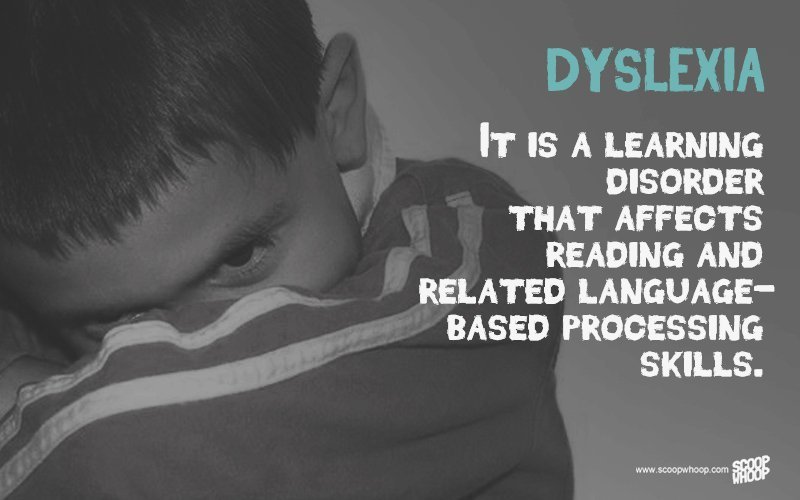
It’s a lifelong condition caused by inherited traits that affect how your brain works. However, most children with dyslexia can succeed in school with tutoring or a specialized education program. Emotional support also plays an important role.
8. Post Traumatic Stress Disorder
Post-traumatic stress disorder, or PTSD, is a serious potentially debilitating condition that can occur in people who have experienced or witnessed a natural disaster, serious accident, terrorist incident, sudden death of a loved one, war, violent personal assault such as rape, or other life-threatening events.
Most people who experience such events recover from them, but people with PTSD continue to be severely depressed and anxious for months or even years following the event.
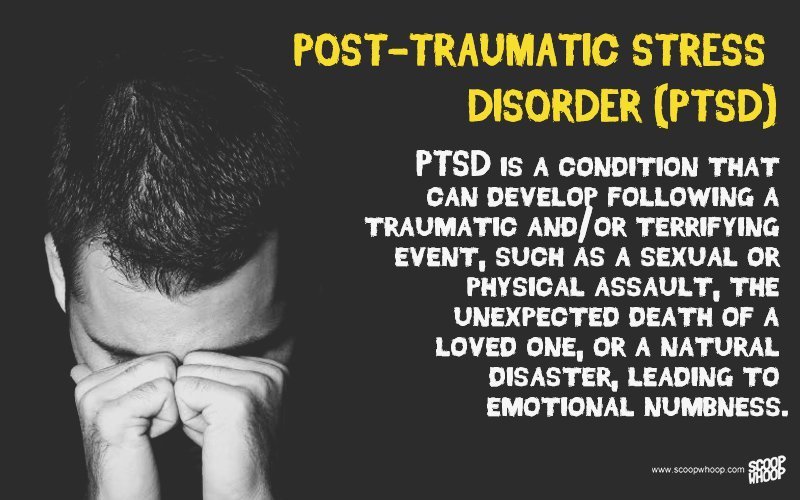
Symptoms may include flashbacks, nightmares and severe anxiety, as well as uncontrollable thoughts about the event.
Mental disorders afflict 5 crore of the Indian population (5%) and most of them need special care.
Matters of the mind are incredibly complex and most of these illnesses are interconnected in ways that are often difficult to grasp. But it is important that we open our minds and hearts to patients plagued by these demons.
It is of utmost priority that mental illness be integrated within the mainstream health paradigm of India and to get rid of the taboo attached to these disorders. Care and conditions at mental health hospitals are abysmal, but more than funding and training, India needs a very big change in attitude.

















